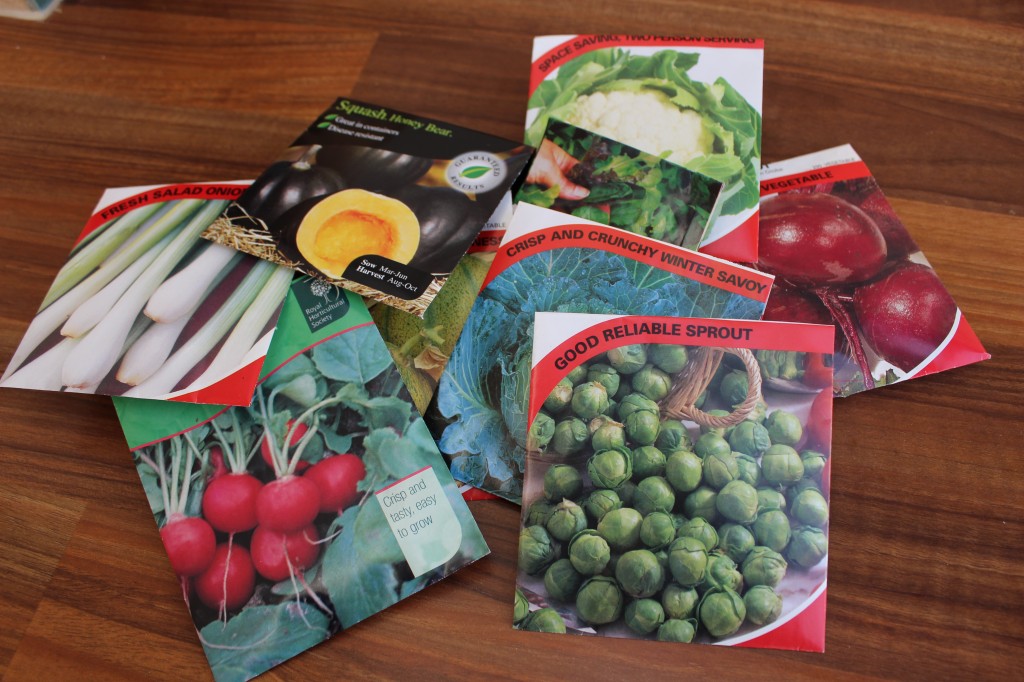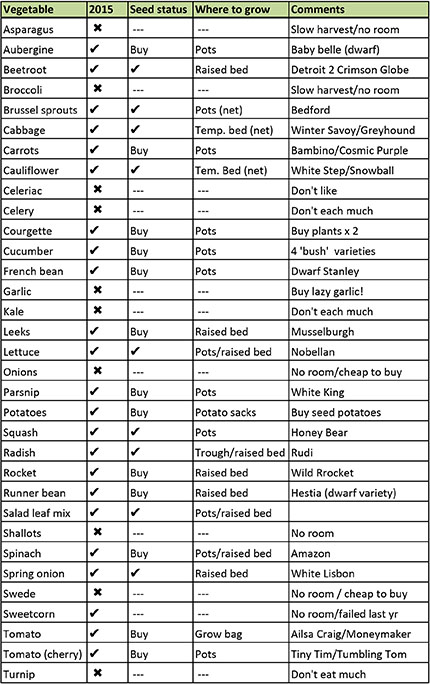If you haven’t done so already, now is the time to choose and buy your vegetable seeds for the year ahead (flowers too, of course, but I’m focusing on the veggies today). For me, that means dusting down the old biscuit tin in the shed containing the seed packets from last year and checking the sow-by dates, taking stock of what I’ve got left and then making the tricky decision of what to grow this year. I say ‘tricky’ because I tend to want to grow pretty much everything, but I don’t have the room. Having said that, nearly all vegetables can be grown in pots (sweetcorn and Jerusalem artichokes excepted) … and I can always buy another pot!
What to grow
(1) Grow what you like to eat! It might sound daft, but you’ll be surprised how many people grow things they don’t really like. I made this mistake with a crop of Swiss Chard a couple of years ago. It grew well (so I ended up with stacks of it), and it looked pretty, but I didn’t really like the taste of it that much and most of the leaves ended up in the compost.
(2) Consider the economics. If you don’t have a massive plot, be money-wise. Some vegetables are simply cheaper to buy and no amount of gardening savvy will produce a cost-saving benefit. So grow high-value vegetables and buy the cheap ones. I’m always amazed at how much a bag of mixed salad leaves costs in the supermarket. It’s such a good feeling to see them growing rampant in pots on my patio for a fraction of the price. French beans are another money saver in our house.
(3) Make some ‘easy-grow’ choices, particularly if you are new to vegetable growing (my ‘sure things’ are baby carrots and beetroot). That way, if your parsnips don’t germinate or the caterpillars eat all your cabbages you’ll still be pulling up some fresh veg with a smug smile and won’t be completely despondent at the end of the season.
(4) Check the growing times. If you don’t want to wait until Christmas to harvest your brussel sprouts, or next year for your purple sprouting broccoli, then choose vegetables that will provide ‘instant’ gratification. Lettuce, radishes, baby carrots and courgettes are all good options.
(5) Match your veg to your garden. Think about where you will be growing the vegetables. For example, if you have heavy clay soil (like me), long-rooted carrots or parsnips will struggle, so choose the stumpier varieties or grow them in pots in lighter compost. If your garden is shady, avoid growing sun lovers like tomatoes and beetroot; grow leafy veg instead. If you don’t have a lot of room, try dwarf varieties (I was over the moon with my dwarf runner beans last year) or ‘mini veg’ that you can grow in closer proximity to each other.
(6) Try something different. It’s quite exciting to grow something that you haven’t eaten before, or that you’re unlikely to find in the shops. Last year I grew some baby squash – and they were delicious!
Get organized
It’s a good idea to make a list of what you’ve got, what you need to buy, and where you’re going to grow it.
Buying seed
There are lots of seed suppliers out there. To avoid getting overwhelmed by it all, my advice is to check out the information from 2 or 3 reputable ones (you don’t want dud seeds!) before making your selection. One of winter’s great pleasures is kicking back with a cup of coffee or a glass of wine, perusing your seed catalogues or information online, sending your order off and then fantasizing about how your garden will look in the summer, bursting with your very own supply of fresh healthy veg.
I’d love to hear what you’re planning to grow this year. And all tips welcome! Please leave a comment below.


